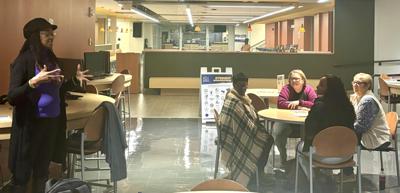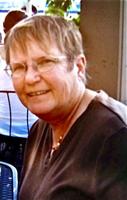SAYBROOK — The city’s ad hoc committee on exploring racism as a public health crisis hosted a simulation on racial issues at Kent State Ashtabula Monday night.
The simulation’s goal was to shed light on the systemic inequities that continue to affect local communities.
Through the racial disparity simulation, local residents gained a deeper understanding of the impact policies and systemic practices have on different racial groups across generations.
The simulation, led by Ward 3 Councilperson RoLesia Holman, gave participants an opportunity to experience the real-life consequences of legislative decisions on marginalized communities.
Attendees were better able to understand the complexities of wealth gaps and the long-term effects of policy decisions on individuals and families.
“The simulation is really an opportunity for people to experience what a policy is like if it’s being implemented,” Holman said. “We oftentimes wonder, why is there a wealth disparity amongst racial groups? And so, fortunately, there’s an organization called Bread of Life that provides a simulation so people can actually put themselves in another person’s shoes and see how legislation impacts individuals and groups over multiple generations.”
Holman, who is also a small business owner and education consultant, said the simulation helped remove assumptions and biases, providing participants with a firsthand look at the struggles faced by people of color in navigating systemic barriers.
Ad hoc committee member Kimberly Adams introduced the simulation.
“We’re going to cover around 13 federal policies that created structural inequalities in many areas, such as property ownership and education, and how these policies increase hunger and poverty in the communities of color,” she said.
Jessica Leveto, an associate professor of sociology and criminology at Kent State University Ashtabula and part of the committee, said it’s a good opportunity for people to start having tough conversations and understand what structural or systematic racism, as well as the impact of policy on lived experience today.
“As a sociologist, I have about 25 years understanding systemic inequality,” she said. “I no longer see individualized racism, I see the systemic impact. I think oftentimes people see individual racism and they can call that out, and they don’t understand what’s impactful is also systemic.
“The policies and practices that have just become part of our day-to-day routine, that we don’t even think about or question, that leads to disparate outcomes.”
Leveto said her students participated in the simulation. The themes they discussed afterwards included persistent impact of historical policies, generational harm, feelings of guilt and privilege and calls for change.
Louis Murphy Jr., a teacher at the Ashtabula Area City Schools and part of the committee, participated and helped attendees during the simulation.
“There are policies being passed today, especially at the state level, which disproportionately impact persons of color, varied religions, sexual orientation, gender, and various other demographics,” he said. “It is up to us to ensure there are people in office who represent the best interest of the majority and progress us forward, not just as a state and a country, but as the human species.”
Holman said the feedback has been overwhelmingly positive.
“It’s really a mind-changer for a lot of folks,” she said. “This is the fourth or fifth time we’ve done it, and we will continue to do it to raise awareness and help people understand why things are the way they are.”
One of the key takeaways from the simulation was the need for city government to look at policy decisions through an equity lens.
Holman said the city probably has the most diverse council since its inception.
“That was a great accomplishment,” she said.
Holman said she’s pleased with road improvements and providing trash cans and recycling bins to city residents.
In addition, she said too often, legislation is passed without fully considering its impact on various groups of people.
“We get a lot of legislation put in front of us that we are asked to pass, and unfortunately, we pass legislation without asking enough questions around who it’s going to impact and how it’s going to impact certain groups of people,” Holman said. “Those are the questions we should be asking and we don’t ask enough of them.”
Holman believes this is key to creating more equitable and effective policies in the future.
“We should be pushing pause, exploring, and doing a little more research, looking at other cities, before we just adopt a piece of legislation,” Holman said. “We need to look at things from a broader perspective, an equity lens. It’s not just something we’re passing, it’s going to have real-life impacts on people.”
She spoke about the importance of narrowing the wealth gap and creating policies that help elevate all members of the community, regardless of race, zip code, or background.
“The goal is how do we really narrow this gap?” Holman said. “How do we do things that intentionally provide a better quality of life for all of our residents, regardless of their race, their last name, their zip code, or what ward they’re in?”
As the ad hoc committee’s efforts continue, Holman remains committed to asking difficult questions, raising awareness and working to bring about positive change for all residents of Ashtabula.
The next simulation will take place at the Ashtabula County District Library at 6 p.m. Dec. 5.














Commented
Sorry, there are no recent results for popular commented articles.